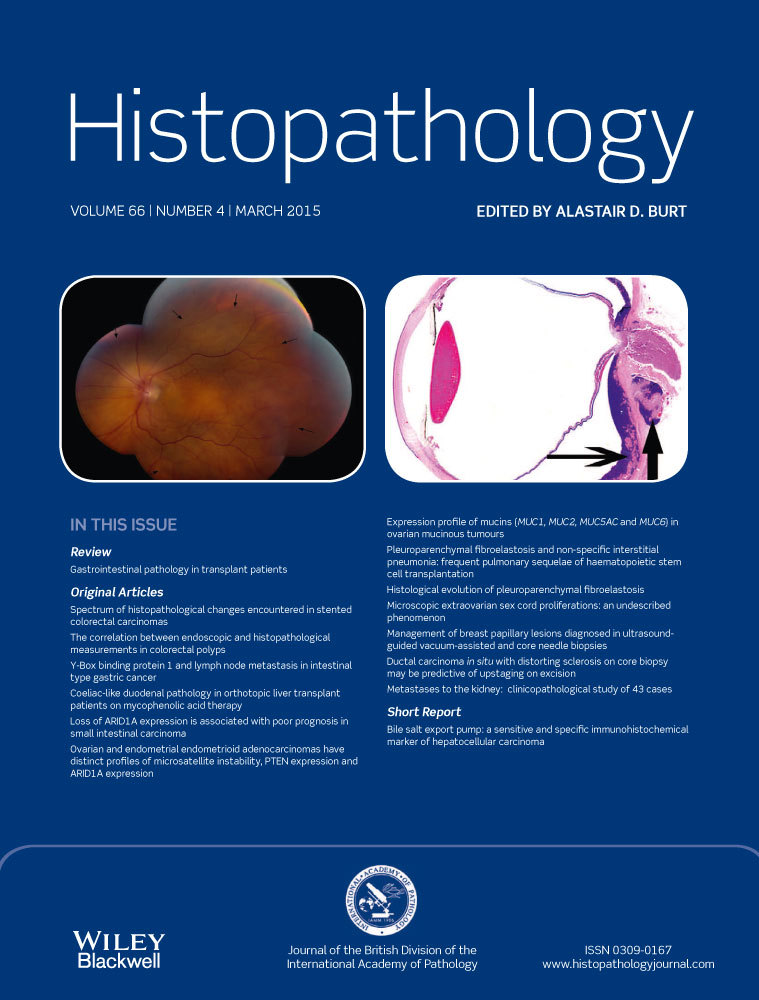Expression profile of mucins (MUC1, MUC2, MUC5AC, and MUC6) in ovarian mucinous tumours: changes in expression from benign to malignant tumours
Abstract
Aims
Mucins (MUCs) constitute a family of glycoproteins expressed by epithelial cells. They show specific tissue-type expression, and are useful for differentiating between different cancers. Studies have shown changes in MUC expression with tumour progression in a variety of cancers. The aim of this study was to characterize the profile of MUC expression in benign, borderline and malignant intestinal-type ovarian mucinous tumours (OMTs).
Methods and results
MUC1, MUC2, MUC5AC and MUC6 expression was studied by immunohistochemistry in 53 OMTs (19 malignant, 25 borderline, and nine benign). The positivity frequencies of MUC1 in benign, borderline and malignant OMTs were 22.2%, 12%, and 31.6%, respectively. For MUC2, they were 0%, 40%, and 42.1%, respectively. For MUC5AC, they were 100%, 100%, and 94.8%, respectively. For MUC6, they were 66.7%, 16%, and 26.3%, respectively. Significantly increased MUC2 expression and decreased MUC6 expression were seen in borderline and malignant OMTs, as compared with benign tumours.
Conclusion
This is the first study to compare the expression of all four MUCs in OMT with statistical analysis. We show that MUC2 expression and MUC6 expression change with the progression of benign to borderline and malignant tumours. We suggest that these changes may contribute to malignant transformation.




